We occasionally link to goods offered by vendors to help the reader find relevant products. Some of these may be affiliate based, meaning we earn small commissions (at no additional cost to you) if items are purchased. Here is more about what we do.
Every time we go out to breakfast or brunch, my one friend has to bring something with her…

She packs her own stash of pure maple syrup, a mini bottle tucked away in her purse.
To some, it might be an odd thing to do – why not just use the syrup the restaurant provides?
But did you know that there isn’t just one kind of maple syrup?
With a range of flavors, colors, grades, and sweetness levels, it is a unique ingredient perfect for a wide range of applications: topping your breakfast, mixing into cocktails, and using as a glaze for veggies and meats.
It’s no wonder that my friend has a particular kind she likes to use!
So how is this sweet stuff actually made?
There’s a lot to do to way before you grab a bottle and pour a cascade of syrup on your stack of pancakes!
If you’ve ever been curious just how that addictively rich, sweet liquid is made, keep on reading. With the help and know-how of one expert in the field, we tap into the process of making of maple syrup, and the different varieties available to buy now.
How It’s Made
Laura Sorkin and Eric Sorkin, married co-founders of Runamok Maple, know all about the process of making this sweet concoction. Their Vermont-based company produces a deliciously sweet variety of pure, infused, smoked, and barrel-aged options – all tapped from the 81,000 trees grown in the 1,350 acres Runamok owns, spanning across the northern part of the state.
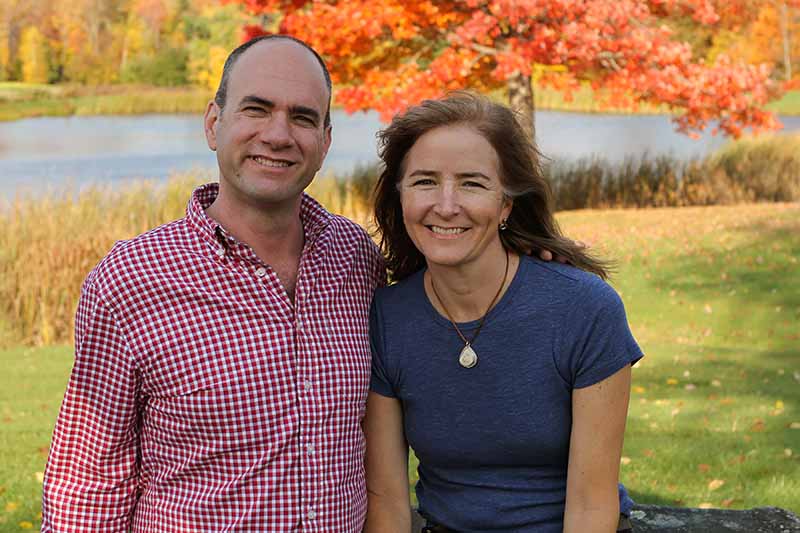
Laura Sorkin is the perfect source to explain how it’s made.
First, the production of maple syrup is referred to as sugaring (how sweet!).
In mid-winter, trees are “tapped” by drilling a small hole in each tree and hammering in a tap, which can be connected to a tube and large tank.

Once the sap has been extracted and transported to the sugar house, the maple syrup production facility, the majority of the water in the syrup is removed – for Runamok’s products, 90% of the water is removed.
“The concentrated sap is then boiled to syrup consistency. It takes between 40-50 gallons of sap to make one gallon of maple syrup.”
The concentrated liquid is then sent through a filter press to create a clear, amber liquid – maple syrup!

The final product can have a world of variations.
“Just like wine and cheese, there will be a difference in taste of maple syrup depending upon where it came from,” explains Sorkin.
“The French call it terroir, and it just means that the taste profile is a product of the soil and climate of our property.”
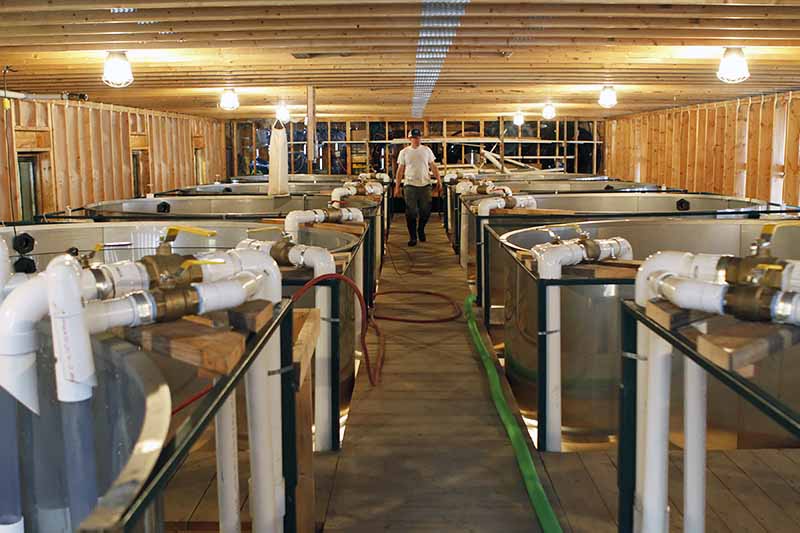
“The taste of the syrup will also change within the season, starting out light and getting darker as the season goes on,” Sorkin continues.
Want to learn more about the different options available to you? Keep reading below to get all the info you need on the grading scale, and what it means in terms of taste.
Grading the Sweet Sap
Although not required, most United States varieties are assigned a grade – on a scale of four different US Grade A color/taste classes.
Grade is typically determined by color, translucence, and flavor. Some factors that affect grading include sugar content of the sap, what point in the season it was harvested, and the rate of evaporation.
Grade A classification requires that it is clean, free from cloudiness, and free from off flavors and odors, with a uniform, bright color.
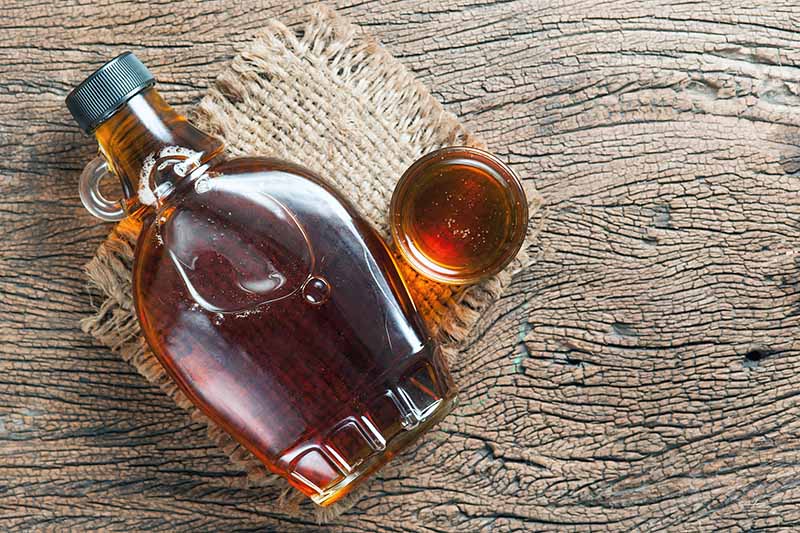
Grade is an important factor to consider when making a purchase.
During a trip to Vermont, I was able to attend a tasting. I was offered samples of each grade in order to figure out which one was my favorite, and I suggest you do the same to pick out what you like based on your personal flavor preferences.
A kitchen full of this sweet, delicious condiment? Who’s complaining…
See below for a more detailed rundown on the most recent USDA grade classifications, and where to find some of our favorites.
US Grade A Golden Color, Delicate Taste
This is the highest grade available, with a mild, subtle taste.
This variety is generally produced early in the season, when the temperature is cooler. Higher temperatures lead to sap fermentation, which contributes to the darker, more flavorful characteristics of the other grades.
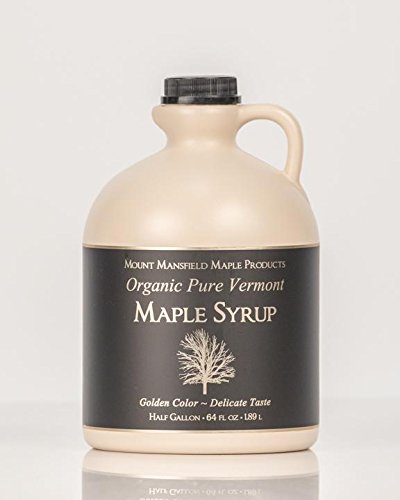
Foodal Recommends Mount Mansfield Maple Syrup Golden Color, Delicate Taste
US Grade A Amber Color, Rich Taste
This grade has a full-bodied taste of medium intensity – not too strong, not too delicate.
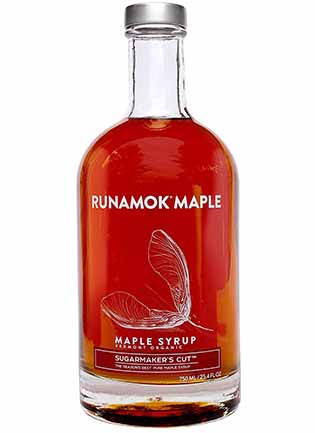
Foodal Recommends Runamok Sugarmaker’s Cut Organic Maple Syrup
Runamok Sugarmaker’s Cut has this grade, produced in the middle of the season when “we find the flavor to have the perfect balance of caramel, acid, honey and floral flavors,” Sorkin says.
Another favorite of this type is Maine Maple Syrup, available from Stonewall Kitchen, which they say is “one of [their] most sought after localized items.”
Foodal Recommends Maine Maple Syrup, available in several sizes from Stonewall Kitchen
US Grade A Dark Color, Robust Taste
Products sold with this grade will have a stronger taste than any of the previous grades.
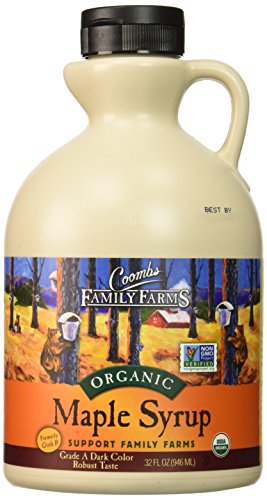
Foodal Recommends Coombs Family Farms Organic Maple Syrup Grade A Dark Color, Robust Taste
US Grade A Very Dark Color, Strong Taste
This grade will have the strongest taste compared to all other grades.
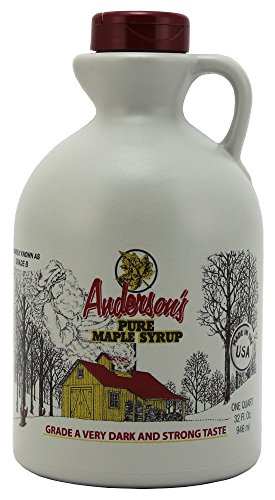
Foodal Recommends Anderson’s Pure Maple Syrup Grade A Very Dark, Strong Taste
Flavored
For a fun exploration of a bevy of taste sensations, this deliciously sticky sweetener can be infused and flavored with a variety of ingredients.
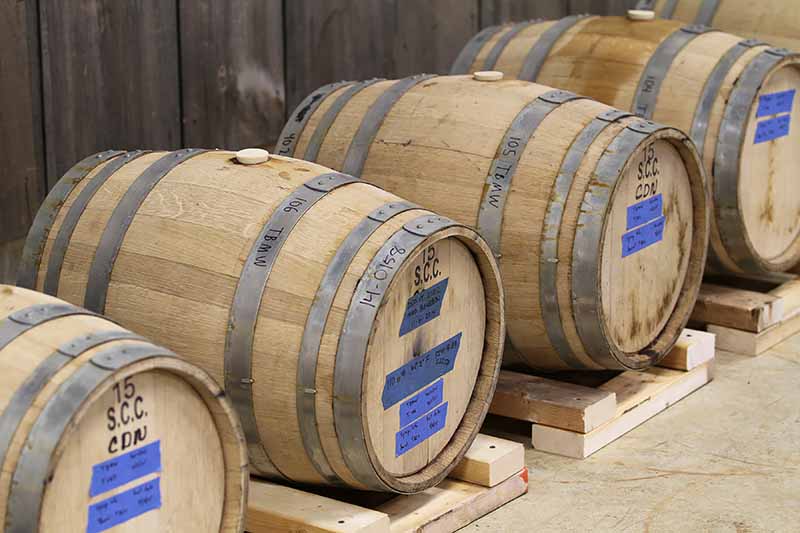
Wanting “to do some different things with maple,” as Sorkin says, Runamok has produced a line of barrel-aged and infused selections, often experimenting with new infusions and barrel types, like cinnamon and vanilla, smoked pecan wood, jasmine tea, and whiskey or bourbon barrels.
Have fun searching for your own favorite flavored syrups!
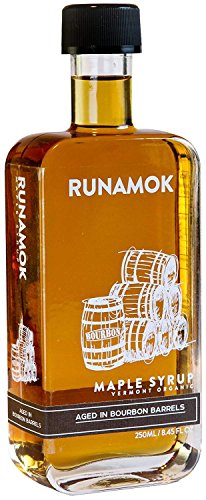
Foodal Recommends Runamok Barrel-Aged Bourbon Maple Syrup
The Other Guys
To ensure you’re getting the real stuff, look to the ingredients: you want to see 100% pure maple syrup! Unless you intend to buy something infused or flavored, there should be no other ingredients listed.
If you see corn syrup, caramel color, molasses, natural and artificial flavors, or stabilizers on the ingredient list, you are not eating the pure ingredient.
Do your research, readers!
A One-of-a-Kind Ingredient You Need to Have
My friend isn’t crazy – with so many subtle variations of taste and color with this product, she knows what she likes!
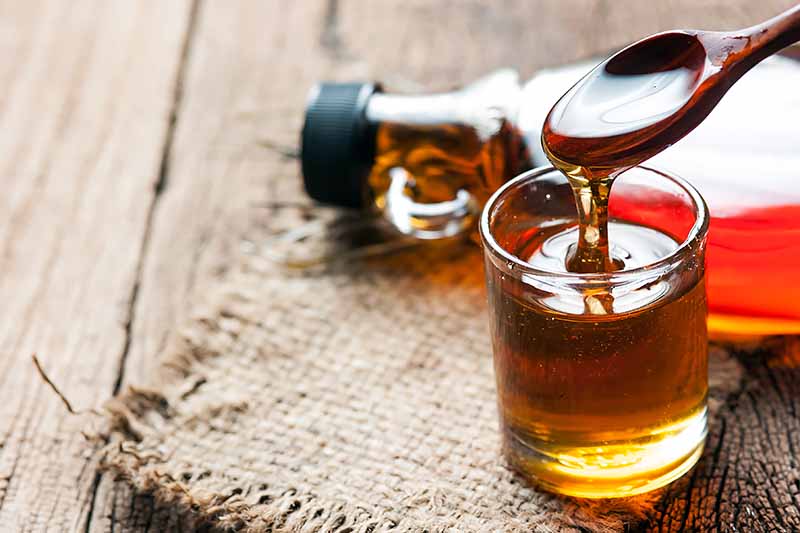
Take the time to find out what you like – experiment at home, go to tastings, and try new recipes to determine what your favorite varieties and grades are, and how you like to incorporate them in your kitchen.
Have any of you participated in sugaring before? We’d love to hear all about your experiences with this one-of-a-kind ingredient, and if you have any favorite recipes. Share your thoughts in the comments below.
For some of our favorite recipes that incorporate this sweet ingredient, try these:
- Pear Sorbet with Ginger-Infused Maple Syrup
- Sweet and Salty Maple Cookies
- Blueberry Galettes
- Vegan Pumpkin Muffins
Photos by Carol Sullivan © Runamok Maple, reprinted with permission. Product photos via Mount Mansfield, Runamok, Coombs Family Farms, Stonewall Kitchen, and Anderson’s. Uncredited photos: Shutterstock. Originally published by Jennifer Swartvagher on March 19th, 2015. Last updated: January 10, 2019 at 19:33 pm.
About Nikki Cervone
Nikki Cervone is an ACS Certified Cheese Professional and cheesemonger living in Pittsburgh. Nikki holds an AAS in baking/pastry from Westmoreland County Community College, a BA in Communications from Duquesne University, and an MLA in Gastronomy from Boston University. When she's not nibbling on her favorite cheeses or testing a batch of cupcakes, Nikki enjoys a healthy dose of yoga, wine, hiking, singing in the shower, and chocolate. Lots of chocolate.

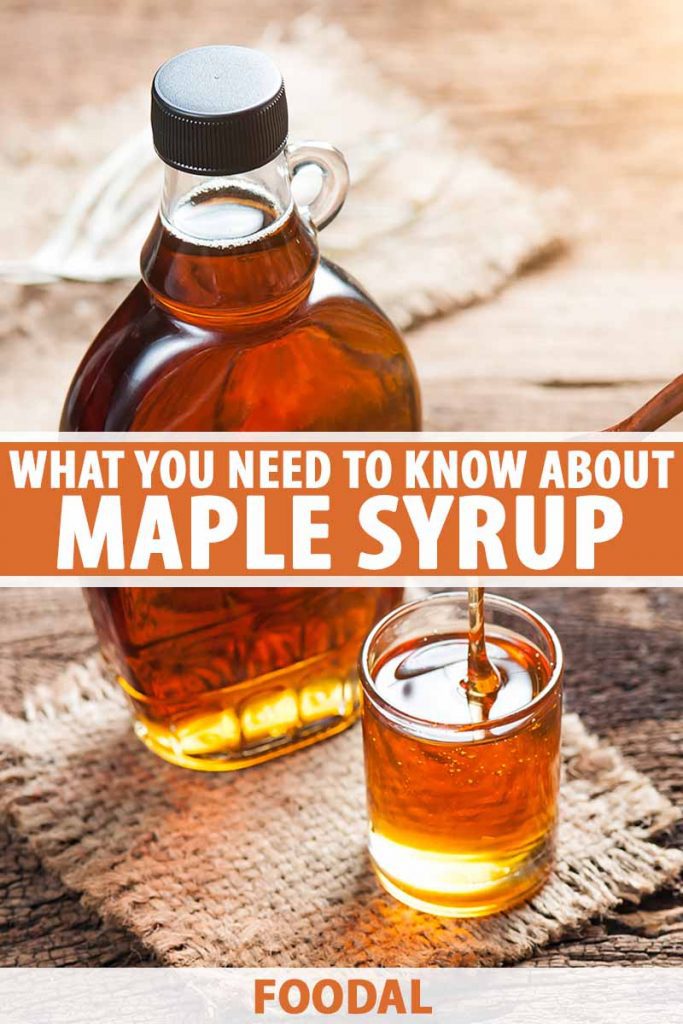




Very informative article! Funny, I always thought maple syrup was more of a Canadian thing (I’m from all the way in Asia) and that there was only 1 type. Something which I sometimes do when I make pancakes or french toast is to mix a little syrup INTO the batter itself (not too much because you don’t want it to burn) and it always turns out really delicious, especially served with some melted butter and extra syrup on top.
Syrup in the batter sounds delicious. I will have to try that.
I love that idea! I want to make pancakes this weekend and try putting syrup into the batter. I’m ridiculous when it comes to maple syrup. I will drink it straight. So this idea has me salivating! Thanks! And thanks Jennifer for the great article! Although don’t hate too much on Grade B… it is my favorite! 🙂
Ah yes, we always try to get our share of maple syrup and in fact it’s almost become a staple in our home. Though my family and I are a few miles away from Canada we still love the thing. It’s a richer, more flavorful substitute to honey in my opinion.
I love maple syrup when buying it I buy the best. I’ve tried cheap brands, and I find it just doesn’t deliver. I will pour tons of this thick sweet treat on my pancakes with an ample amount of butter as well.
I was fortunate to live in Vermont where they made maple syrup and some trees nearby were tapped. Waffles and maple syrup are great comfort foods during winter anytime of the day. Prices between maple syrup does vary and he best place to get then are coops, where you can get local and fresh syrup.
I didn’t even know that maple syrup had seasons! And it wasn’t until recently that I realized maple syrups have “grades” (which can explain why I got so confused when I went to my local Trader Joe’s to get maple syrup and realize there are different grades).
My husband and I sometimes have “breakfast for dinner” and I totally agree, whether you have waffles or pancakes you MUST have maple syrup with them! I’ve tried to do it with honey instead of the syrup and unfortunately, it isn’t the same 🙁
Maple season is just getting underway in Upstate New York. I have a yard filled with maple trees and I am tempted to try and tap them to see what we get.
While honey, especially spreadable honey, is a great topping on toast, I have never tried it on pancakes or waffles.
I have to admit something to you guys: I do not care for maple syrup. Now, it may just be a matter of having terrible experience with the syrup I’ve tried thus far in my life. I love berry syrups or other flavours but just not maple. Never experienced the different grades & never tried it when it was ‘in season’. That might be my next attempt: Maple tastings.
What a great write up and so educational at the same time.
I too had not appreciated that there were different grades of Maple Syrup, or that it was even processed after being extracted from the tree. I guess I should have done really, given that silver birch sap is so runny and thin as well. But I had no idea that so much sap was needed to produce so little syrup!
Here was me thinking maple syrup only came from Canada! I’m in the UK though and it’s not quite as popular here. It tends to be used only on pancakes or as a glaze for ham. I enjoy it though and would like to see it served more often.
I’m originally from Massachusetts, although I live in Texas now. I was shocked to discover, upon moving here, that many people use corn syrup on their pancakes and waffles, rather than maple syrup.
Maple syrup was a staple in our house growing up, and I pretty much love all things maple. I even prefer penuche over most chocolate fudges. My dream is to one day do the maple syrup experience you mentioned. Thanks for the information about the grades. I knew there were grades, but not specifics of each particular one. The waffles look delicious, too!
Wow, I had never heard of putting corn syrup on pancakes and waffles.
I agree with you. Maple penuche is delicious.
I love maple syrup! I eat it with most sweet things I eat, since it mixes well with mostly everything. I try to buy it from reputable brands since I’ve noticed that the cheap brands don’t have the same taste.
Also seeing as this recipe looks tasty, I might try it and maybe switch some things up a little bit!
Indeed, real maple syrup is far better in taste and quality. It tends to be more expensive, but that’s because it is so much better. In my area, it can be tough to find, except for certain times of year. One little store I know does a big sale on it once each year, so that’s the time to grab it.
Having breakfast for dinner is fun, and offers a nice change of pace. I liked doing it once in a while when the kids were little, and they really enjoyed it. I sometimes eat breakfast foods for dinner now, since I have never really been a breakfast in the morning person, but these days, it’s usually only when I’m just making something for myself.
I love having breakfast for dinner too! I don’t tend to eat in the morning anyway, so it;s always nice to have these “morning” foods at a more convenient time!
Maple syrup is something i haven’t had the privilege of sampling and i’d be eager to…currently stuck with honey and only recently opened my cupboard doors for the latest visitor in town; blackstrap molasses, tastes heavenly on my pancakes…i’ll have to look up maple syrup at the grocer’s hoping it doesn’t cost an arm and leg!
I had no idea there was so much more to maple syrup than what I actually knew. I thought there was only one kind of maple syrup so this article is very interesting to me. Also, what a smart idea, putting maple syrup into the batter it sounds delicious! Cant wait to try it this weekend!
The maple syrup in out country is terribly expensive and not always available, but this does sound lovely and a much better product than making your own. I make my own syrup as I try to avoid processed and preserved, store bought foods as much as possible. These look like products I would buy because they are natural.
I grew up on real syrup. Whenever I go to a breakfast dinner and get “maple” syrup it’s just not right!
I love using the medium grade as a salad dressing! 3 parts oil, 1 part vinegar and 1 part syrup.
Okay, you’ve officially convinced me to move my maple syrup from the fridge to the cupboard. I don’t know why I even kept it there in the first place! Warm syrup is clearly superior.
As a Canadian, maple syrup is near and dear to my heart. Actually, my favourite bread recipe calls for maple syrup as a sweetener. This was a really great breakdown of the different types. Bread isn’t typically what I’d recommend any of the ‘light’ grades for, but for the other grades of syrup, I’d highly encourage everyone to try substituting maple syrup for sugar. You get such a more textured and interesting taste, but it’s not too sweet to use for sandwiches. Yum.
I have a bottle of Smokey Kettle Pure Maple Syrup from Canada. I’ve had it a long time on my shelf. Never opened. Would it still be good? Does it go rancid or bad?
Maple syrup should be refrigerated after it’s been opened, but unopened bottles will remain shelf stable for quite awhile! If you notice any evaporation or crystallization the syrup should still be good to use, but if you notice mold, you’ll need to toss it.
I too have yet to try out maple syrup, but only because the stores where I live either won’t sell it or they have the sugar free version. If I have to go on Amazon to get a bottle of pure syrup, then that is what I’ll have to do…after I finish off the honey I’m currently holding of course 🙂
Growing up in the north east my family only bought local grown maple syrup. It makes such a difference compared to store bought bottles. My family is also a big believer in supporting local shops. Every fall we would go up to Vermont for a weekend and stock up for the year.
Maple syrup has got to be one of my all time favourite condiments…it’s wonderful to cook with too, but I’ve never heard of using it in bread! I’m going to try that for sure, I love baking bread from scratch so it’s a perfect fit 🙂 I live in Canada and a lot of my family are Quebecois, so whenever we go back East to visit we make sure to bring home a few bottles of local syrup and it’s so yummy!
Maple syrup is a must have in our house. We have family in Vermont and that means near constant supply of the good stuff. Our weekend brunches have taken to having syrup covering our breakfast sausages along side our buttermilk pancakes cooked in the waffle maker. My younger brother adds maple syrup to everything he eats! Having never seen the process used to make the good stuff, I am amazed at it. So primitive but so effective. I imagine the maple tree sap must flow pretty slowly when the time is cold. That’s a rather different take on “a watched pot never boils”
Thanks for the great article
I had no idea that there was this such of variety when it comes to maple syrup, that explains a lot of things, I really need to take this on count the next time that I buy some of it. Waffles are one of my favorite things to eat on breakfast, it’s simple, classical and of course, delicious if you know how to cook them, I love adding some cinnamon to the recipe, it adds a different touch to them.
Thanks for sharing! 🙂
Interesting to see that the grading system the US uses is not much different from the Canadian one. Personally I think the dark ambers are more flavorful than the light and prefer to use those for everything.
I’ve had maple syrup from a friend’s sustenance farm and it was very very dark with a smoky aroma from the wood fire they used to condense it. It was nothing like any of the commercial farms which I’ve never noticed to have any unique flavors.
Some people don’t like maple syrup and I can understand that, but I really hope they tried real syrup and not what the Quebecois call “sirop de poteau” (literally: “syrup from a pole”, as in, tapped from a telephone pole). Aunt Jemima’s and other pancake syrups are in this category. Restaurants that serve breakfast almost always have sirop de poteau on the table and not the real thing. If they actually serve the real thing, it will come in a thimble.